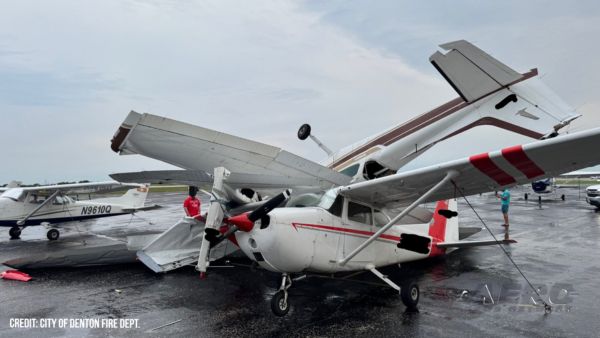Airplane’s Track Ended At The Start Of The Mountainous Terrain In The Bob Marshall Wilderness
Location: Augusta, MT Accident Number: WPR24FA270
Date & Time: August 8, 2024, 12:55 Local Registration: N2764Q
Aircraft: Cessna 182K Injuries: 3 Fatal
Flight Conducted Under: Part 91: General aviation - Personal

On August 08, 2024, about 1255 mountain daylight time, a Cessna 182K, N2764Q, was substantially damaged when it was involved in an accident near Augusta, Montana. The pilot and two passengers were fatally injured. The airplane was operated as a Title 14 Code of Federal Regulations (CFR) Part 91 personal flight.
A father and son were hiking and as they approached Crown Mountain, they noticed smoke rising over the saddle. Upon reaching the saddle, around 1350, they observed the airplane on a steep slope still smoldering from being on fire. They were able to call the Sheriff from the accident site to report the location.
A review of the FAA provided automatic dependent surveillance-broadcast (ADS-B) information disclosed that the airplane departed from Pullman/Moscow Regional Airport, Pullman, Washington about 1120 mdt. Following departure, the airplane continued on a northeast heading and maintained an altitude between 7,500 and 8,000 ft mean sea level (msl). The airplane’s track ended at the start of the mountainous terrain in the Bob Marshall Wilderness. The last return was at 1846:10 and located about 25 nm southwest of the accident site.
The accident site was located in a canyon 17 nm west of Augusta, Montana. The terrain consisted of loose scree beneath firmer ledges and rocky outcrops, bisected by a gradual central gully with forest vegetation. The south canyon wall reached an elevation of 8,450 feet, while the north wall, known as Crown Mountain, peaked at 8,400 feet. The airplane came to rest on a steep south-facing slope at an elevation of 7,550 feet.
The airplane’s nose was oriented upslope on a magnetic bearing of approximately 140°. The wreckage was scattered over a 90-foot area, with the most distant debris, primarily windscreen fragments, located east of the main wreckage. The main wreckage, which included all major control surfaces, was found 800 feet below the cliff's top and 625 feet above the canyon floor.
The fuselage and inboard sections of the wings had been consumed by fire. Within the debris field, fragments of red and blue/green plastic lens covers were found east and west of the main wreckage, respectively, consistent with the wings impacting the terrain with the airplane in a near wings level, nose-up attitude (Figure 3 below). Investigators established continuity of the flight control systems; the flaps were retracted. There was no evidence of catastrophic engine failure and the propeller blade signatures were consistent with the engine producing power at the time of impact.
Investigators contacted several pilots who were flying in the accident area near the time of the accident. They reported the cloud bases were between 6,500-8,000 ft msl with the mountains obstructed by clouds. The tops of the cloud layers were reported to be between 9,500 and 11,000 msl. One of the hikers who reported the accident’s location took several pictures and provided his observations of the weather. He stated it was incredibly foggy during their hike, with visibility often reduced to less than 20 yards as the fog moved in and out, sometimes obscuring the horizon completely. When they reached the saddle, the wind picked up dramatically, and they were enveloped in fog.
The pilot purchased the airplane in March 2022 and received his private pilot certificate in May 2023. A review of the pilot's medical records on file with the FAA indicated that on February 07, 2024, when he applied for his most recent third-class aviation medical certificate, he reported that his total flight time experience was 149 hours.
 Aero-News: Quote of the Day (09.12.25)
Aero-News: Quote of the Day (09.12.25) First-ever Jetson ONE eVTOL Delivery Goes to Oculus Founder
First-ever Jetson ONE eVTOL Delivery Goes to Oculus Founder Hawaiian Airlines, Honolulu CC Start Mx Tech Program
Hawaiian Airlines, Honolulu CC Start Mx Tech Program Bristell Receives First FAA Part 23 Certification for its B23 Trainer
Bristell Receives First FAA Part 23 Certification for its B23 Trainer Blue Alchemist Successfully Completes Critical Design Review
Blue Alchemist Successfully Completes Critical Design Review



